|
| |
 
|
 The inclusion of Graham Hill on my list of the greatest
drivers is probably the most controversial. It is easy to underestimate someone who has
come from so humble a beginning. Hill came late to motor racing, in fact he had not even
driven a car until he was 24. His early years marked by a profound lack of money and one
of the first passenger cars that Hill owned was a 1929 Austin. The car was a wreck which
is just about what you would expect for 70 dollars. Soon loosing its brakes Hill would
have to scrub the car's tires against the curb in order to stop. He would later remark
that all budding race car drivers should own such a car. "The chief qualities of
a racing driver are concentration, determination and anticipation", he said "A
1929 Austin without brakes develops all three - anticipation rather more than the first
two, perhaps." The inclusion of Graham Hill on my list of the greatest
drivers is probably the most controversial. It is easy to underestimate someone who has
come from so humble a beginning. Hill came late to motor racing, in fact he had not even
driven a car until he was 24. His early years marked by a profound lack of money and one
of the first passenger cars that Hill owned was a 1929 Austin. The car was a wreck which
is just about what you would expect for 70 dollars. Soon loosing its brakes Hill would
have to scrub the car's tires against the curb in order to stop. He would later remark
that all budding race car drivers should own such a car. "The chief qualities of
a racing driver are concentration, determination and anticipation", he said "A
1929 Austin without brakes develops all three - anticipation rather more than the first
two, perhaps." Graham Hill joined
Smiths, the instrument makers at the age of 16. He served a five-year apprenticeship and
was called into the Navy at the age of 21. Two years later he returned to Smiths. During
this time he had taken up rowing and met his future wife Bette. One day he saw an
advertisement in a magazine for a new racing school which said that anyone interested
could drive a racing car at Brands Hatch for five shillings a lap. Hill went down and
raced four laps and as he would later remark "everything changed." The
school was called the Universal Motor Racing Club where he suggested to the owner that he
was willing to exchange his labor as a mechanic in exchange for letting him drive one of
the race cars. Unfortunately he was taken advantage of and the owner soon left without
Hill ever getting close to driving a race car. Hill would not give up on his dream and
soon entered into a similar arrangement with another person he had only just met. This
time he actually did race one of the cars and soon this new school, taking advantage of
Hill's limited success, had its first group of students. Hill being the veteran of a
handful of races and besides the owner the only other employee, would be their instructor!
Hill was now ready for bigger and better opportunities and at one race he hitched a ride
back to London with one of the other entrants, a man by the name of Colin Chapman. He
started at Lotus working for Colin Chapman as a mechanic and was paid one pound a day.
Unable to convince Chapman for a chance to race one of his cars he actually quit Lotus
temporarily before finally convincing Chapman. After much cajoling he was elevated to
full-time driving and in 1958 he made his debut in Formula 1. That could only happen today
if he had a couple extra million in his back pocket! After limited success and too many
mechanical failures for his tastes, Hill left for BRM in 1960. In 1962 He won his first
race at Zandvoort and went on to claim the World Championship. The next two years he
continued to battle for the title but his remaining years at BRM was marked by mechanical
failure. In 1967 he returned to Lotus and formed a "super team" with double
World Champion Jimmy Clark. After Clark’s tragic death at Hockenheim, Graham Hill
scored victories in the next two Grand Prix races and was crowned World Champion. The next
year was not a good year for Hill and was marked by his last win at Monaco. This was his
fifth win on this difficult circuit; a record that was not surpassed until Ayrton Senna
captured his sixth victory in 1993. At Watkins Glen he was injured in a terrible accident
that saw him confined to a wheelchair. After he recovered from his injuries he continued
racing but without any further success, eventually starting his own team. In 1975 Graham
Hill was killed when the plane he was piloting went down after getting lost in the fog.
The world would never again see the famous helmet with the rowing stripes. But in 1993 his
son Damon Hill resurrected that famous icon in Formula 1. |
|
|
|
